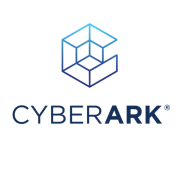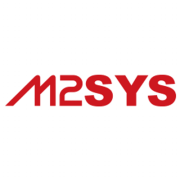UEBA solutions analyze user behavior and entity activities, providing insights into potential threats and security breaches. By assessing normal patterns, UEBA identifies anomalies suggesting compromised credentials or insider threats.
Organizations use UEBA to enhance security through machine learning and analytics, focusing on user activities across networks. It adds a crucial layer to cybersecurity by identifying irregular activities often missed by traditional security measures. Enhanced security measures help organizations maintain robust data protection.
What are the key features of UEBA solutions?In finance, UEBA helps detect unusual transaction patterns that may indicate fraud. Healthcare uses UEBA to monitor access to patient data, enhancing compliance with privacy regulations. In retail, UEBA tracks point-of-sale activities to spot potential security breaches.
Modern organizations benefit from UEBA solutions by gaining deeper insights into network activities, thus enabling proactive threat management and enhancing overall cybersecurity posture.
| Product | Market Share (%) |
|---|---|
| Exabeam | 7.5% |
| IBM Security QRadar | 6.8% |
| Splunk User Behavior Analytics | 6.0% |
| Other | 79.7% |















































User entity behavior analytics, otherwise referred to as UEBA, slowly emerged to replace UBA, offering more powerful solutions. As the threat landscape grew, “entities” were added to UBA to monitor malicious behavior beyond the user level. While UBA can detect human behavior within a network, UEBA can model behaviors of humans as well as the machines within networks, including devices, in addition to applications as well as networks, providing complete visibility. When behavioral abnormalities are associated with an entity (i.e. a particular IP address), attacks hardly go unnoticed. By using a baseline of normal user and machine behaviors, UEBA can recognize when a machine is compromised, and thus minimize the amount of damage that can be done.
While they may seem synonymous, UBA and UEBA are distinctly different. While UBA can detect and track suspicious activities and behaviors, UEBA is able to detect abnormalities that are more complex across multiple users, devices, and IP addresses. Unlike UBA, UEBA tracks user activity and other entities. These entities may or may not include managed and unmanaged endpoints, networks, applications, and external threats.
UBA and SIEM (security and information event management) are closely related. UBA tools work in conjunction with SIEM solutions to reveal anomalies in behavioral patterns within a network. To perform analysis, UEBA relies on security data which is collected and stored by a SIEM. UBA works in real time to uncover unknown threats and anomalies, whereas SIEM uses point-in-time analysis, which means that it can only process a limited number of events in a particular time frame. By combining UBA with a SIEM solution, human and machine behavior can both be spotlighted, providing organizations with the benefits of advanced threat detection that traditional security tools often miss.
User behavior can be defined as how users interact with a website. Typically, this can refer to any action a user takes, such as the amount of time they spend on a specific page, how many pages they visit, how long they remain on the clicked pages, which links they click on, how they scroll, when and where they leave the website from, and much more. Tracking user activity can be especially helpful when related to threats or cyberattacks. Detecting potential risks or threats before they escalate can save organizations from experiencing damage to their systems, and can save lots of money and time.
Behavior analytics tools are tools used by an organization for analytics, statistics, data protection, or breach prevention. With the hacking incidents increasing more and more frequently, using behavioral analytic tools has become a crucial element for all businesses. The primary goal of behavior analytics tools is to track a user's behavior and data usage, as well as network events and typical behavior patterns to easily identify potential threats based on detected anomalies.
UEBA solutions enhance your security measures by analyzing patterns in user behavior to detect anomalies that may indicate insider threats. By continuously monitoring activities, such as file access and login times, UEBA identifies deviations from established norms, helping you spot potential risks from employees or contractors before they cause harm.
What are the key components of UEBA solutions?To effectively utilize UEBA, focus on its three main components: data aggregation, behavior modeling, and risk scoring. Data aggregation collects logs and user activity data. Behavior modeling creates baselines for normal activities, while risk scoring assigns risk levels to deviations, allowing you to prioritize potential threats within your organization.
Can UEBA integrate with existing security systems?Yes, UEBA solutions are designed to integrate seamlessly with your existing security infrastructure. By incorporating data from SIEMs, firewalls, and IAM systems, UEBA provides a comprehensive view of user activities. This integration not only enhances threat detection but also optimizes your current security investments, offering better protection against potential breaches.
What factors should I consider when choosing a UEBA solution?When selecting a UEBA solution, consider its scalability, ease of integration, and customization capabilities. Ensure that the solution can handle your organization's data volume and integrate with existing tools. Customization options are vital for tailoring the system to meet specific security needs, ultimately enhancing its effectiveness in detecting potential threats.
How is UEBA different from traditional security solutions?Traditional security solutions often rely on rule-based systems and signature detection, which can miss sophisticated threats or ones that lie within the organization. UEBA focuses on user behavior, providing an adaptive approach that evolves with new threat patterns. This behavior-centric methodology allows you to quickly identify unusual activities that traditional systems may overlook, improving your overall security posture.